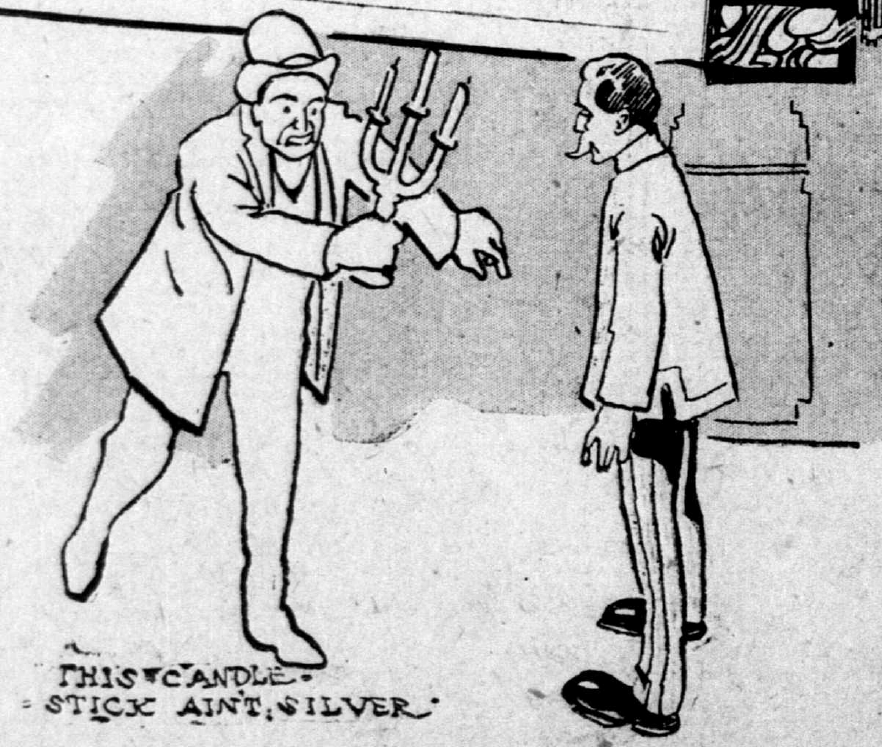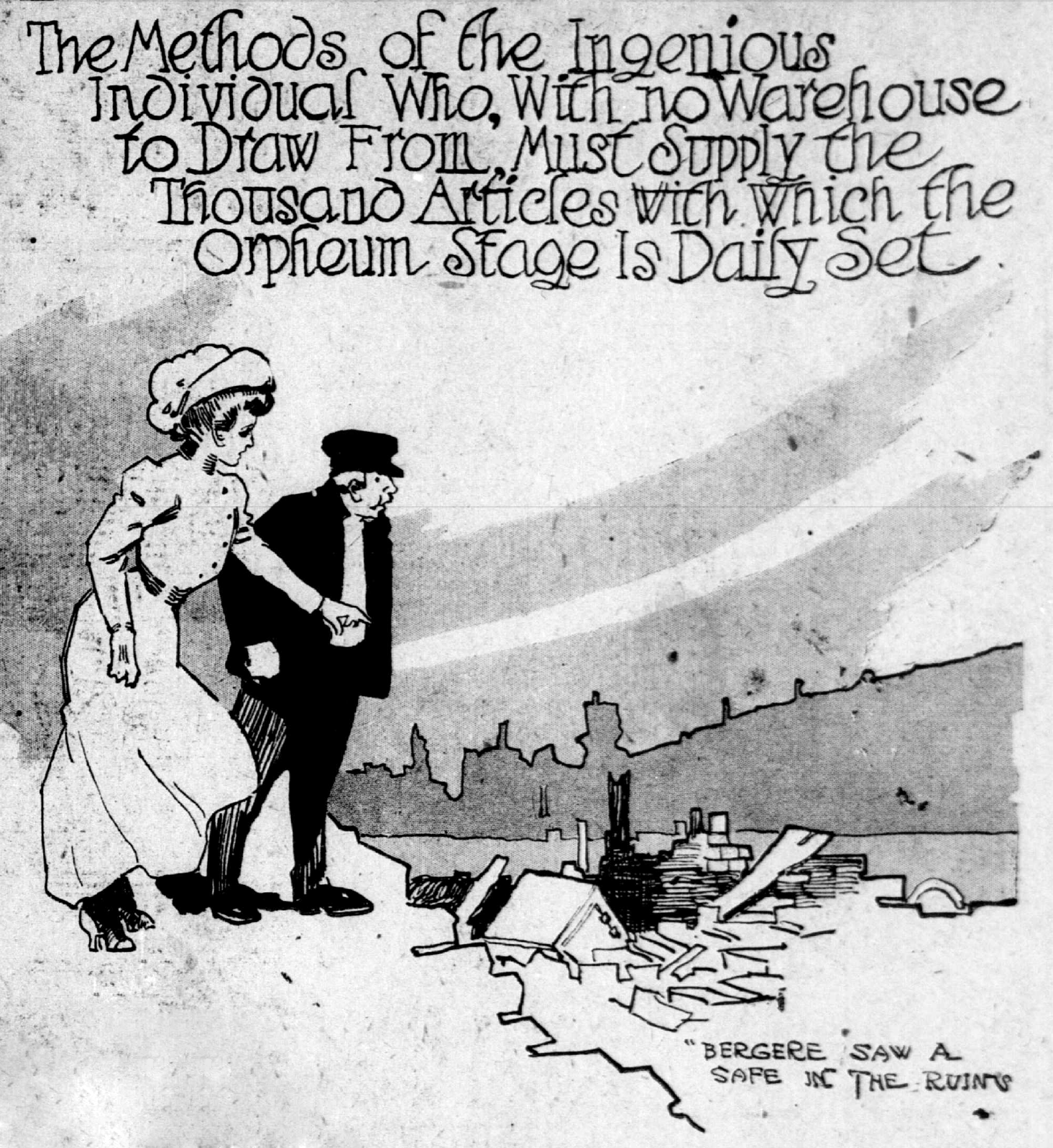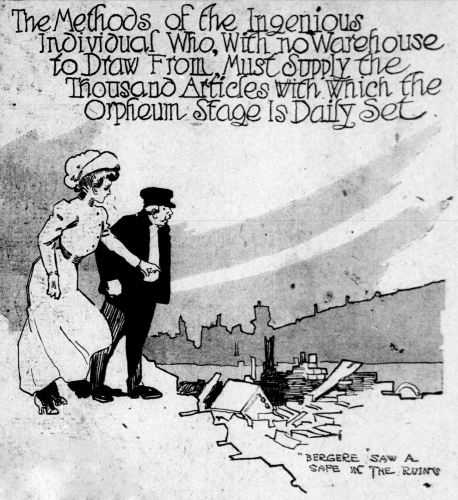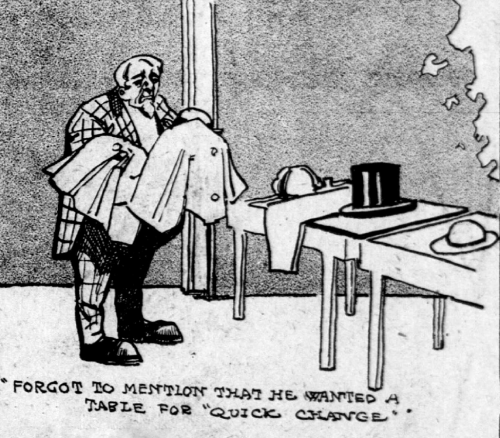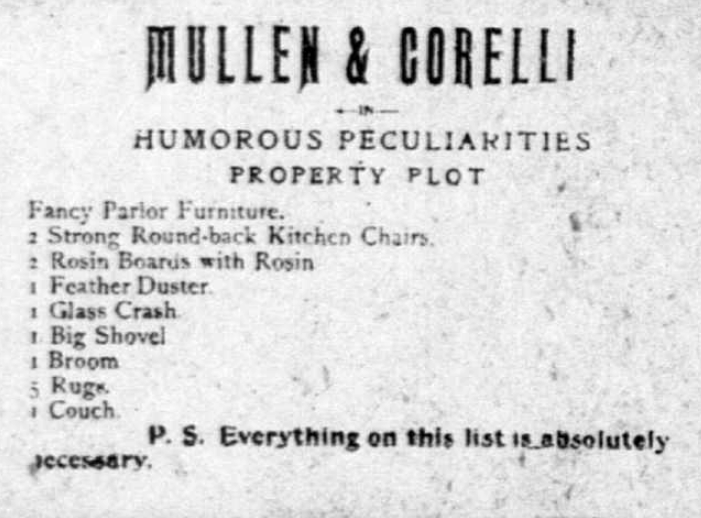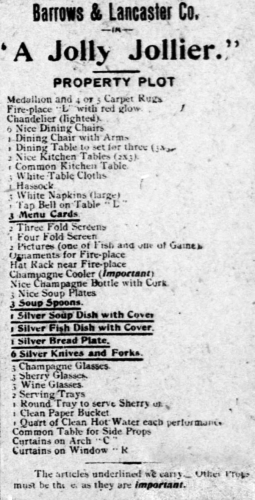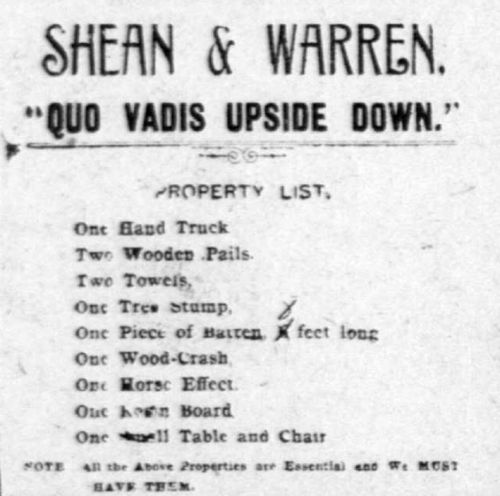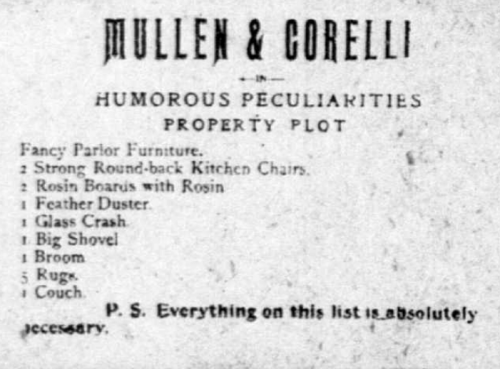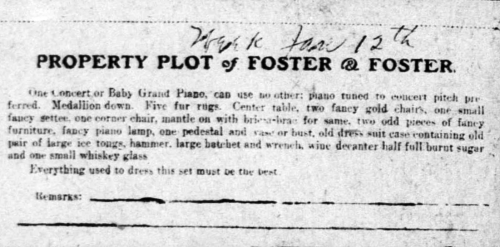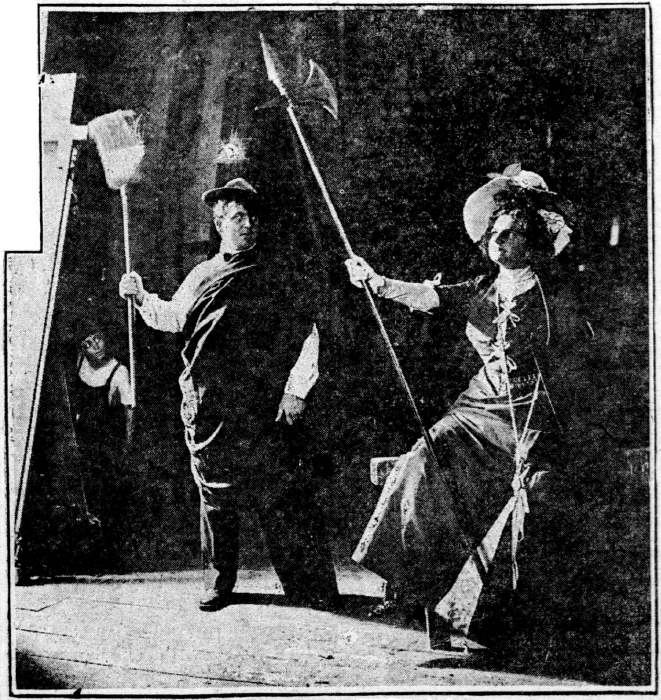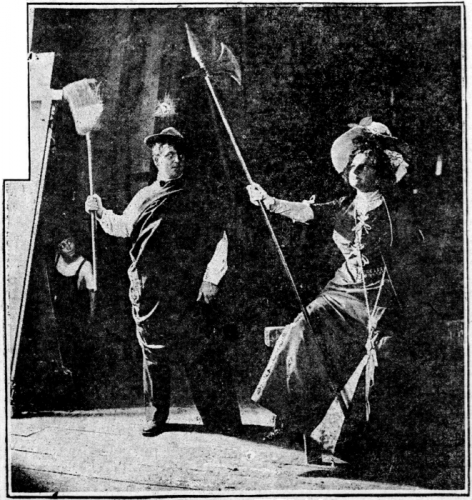The following article and images first appeared in The San Francisco Sunday Call, March 22, 1908. Check out the first part of this article here, and the second part here.
The Problems of the Prop Man
by C. W. Rohrhand
Despite the sad tones and the rush and jump of it all, the men in the “prop” room get a lot of fun out of it all. No man takes more pride in his work than he does when he sees his “efforts” placed before an admiring public. Harry Rosemond is a bit of an actor too, and is seen off and on by the Orpheumites playing small roles when a change of bill is made and no one in town is available for the part. His knowledge of the stage and absolute familiarity with the ‘what’s what’ behind the footlights helps him greatly in handling his property room to the best advantage.
“Big Foster of Foster & Foster kicked right on the stage during his act because the piano stool did not match the piano. He growled and grumbled the whole week, but we only gave him the ha-ha and he had to go on with the stool that did not match the piano. ‘Twas the only one I could find in town. But that is not a marker to the fellow who went on in the old O’Farrell street house. He was so all-fired particular about his setting that he hung around the prop room for three days before he went on to see what I was digging up to dress his scene with. He looked all over the stuff that I had borrowed and had made up for him and seemed perfectly satisfied.
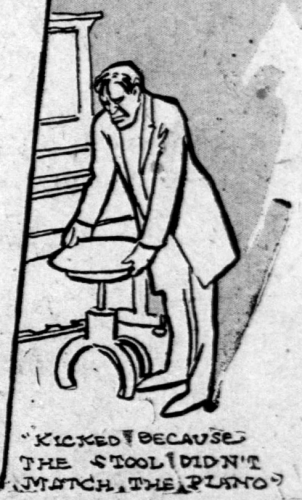
“Well, Sunday came and the show went on for the matinee and everything was going lovely. The drop came down after his act for a stunt in ‘one.’ He had left the stage and we were clearing it for the next set when back he comes with a little bottle in his hand. He goes up to the mantelpiece we had pushed to the back wall, takes down a candlestick he had ordered, poured a little over it out of the bottle he had, and then turned on me. ‘You’re a lot of cheap stiffs here,’ he shouted. ‘I noticed while I was on that there was no sparkle to that candlestick. I asked you for a silver one. This is pewter.’ And the next day he made me go all over town and at last we found one in a second hand shop on Folsom street kept by an old Jew who used it for his Sabbath lights.
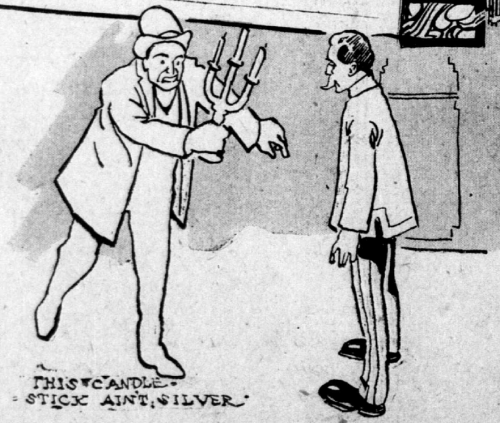
“But I had a hard one the other night,” said Rosemond, as he clasped the arm of Big Mack the special. “Ralph Johnston, the bicycle man, wanted an 18 foot ladder to get up to his stand with. He forgot to put it on his ‘prop’ list and I had to get it. Of course, like all the rest of those fellows, they forget all about everything until Saturday night, and they open on Sunday mat. Eighteen-foot ladder, mind you, but I got it. Walked around town from 11 till nearly 1 in the morning. Way up on O’Farrell street we saw a painter’s scaffold. Saturday night. No work Sunday. Must have it for show Sunday. Found painter’s name on ladder and went into flat. Told lady I’d come for ladder. Swung the scaffold around and dragged the big one into the flat window. Walked with it to the theater. In luck; no cops on the way. Called up painter and told him what I had done. Painter was madder than blue blazes. Swore he’d take the ladder away before the show started. Told him to come down and try it. Met him at the door, gave him passes for two for the matinee. Painter so tickled to see his old ladder on the stage, let us keep it for the two weeks.”
Originally published in The San Francisco Call, March 22, 1908, page 4.

